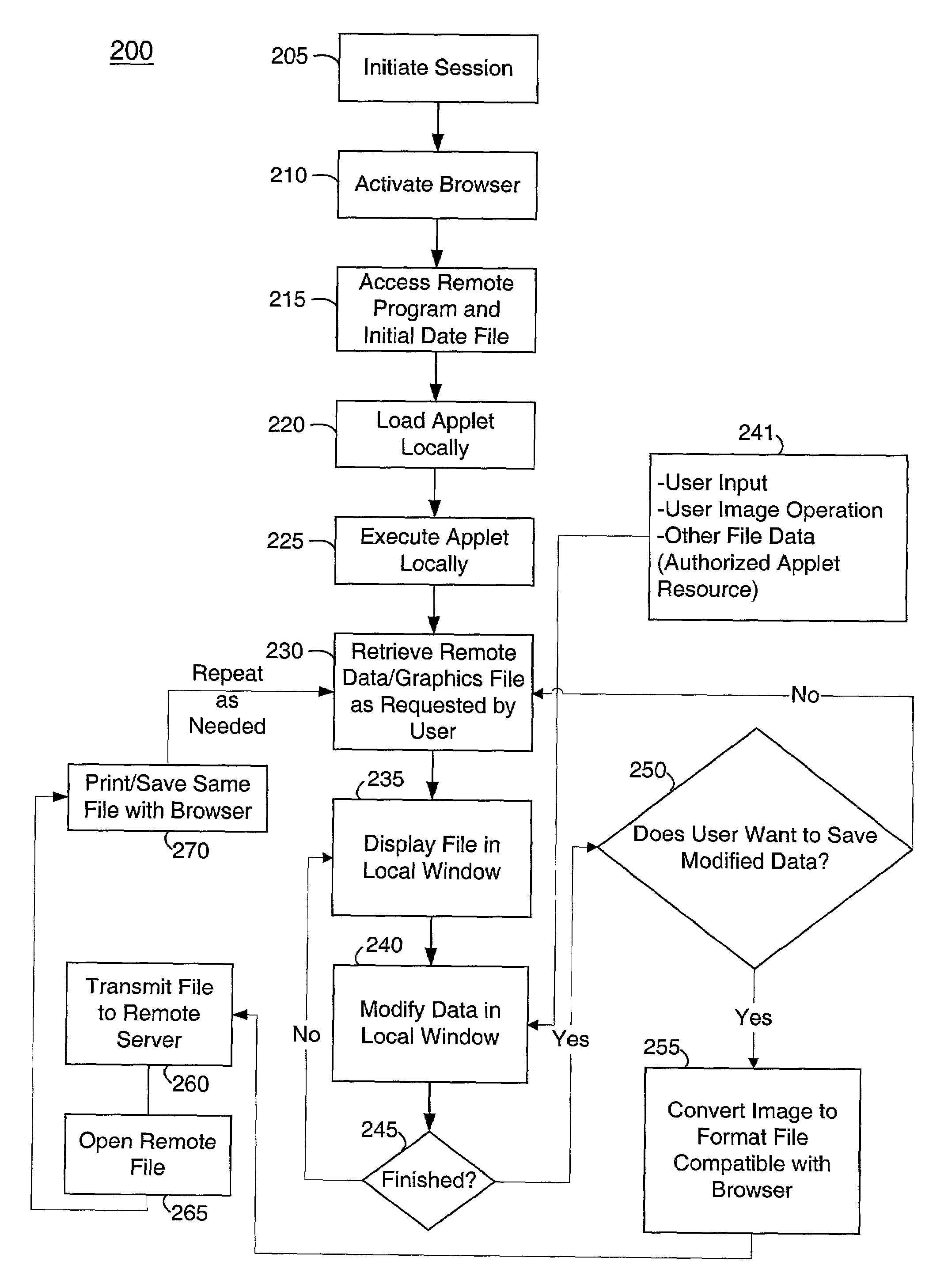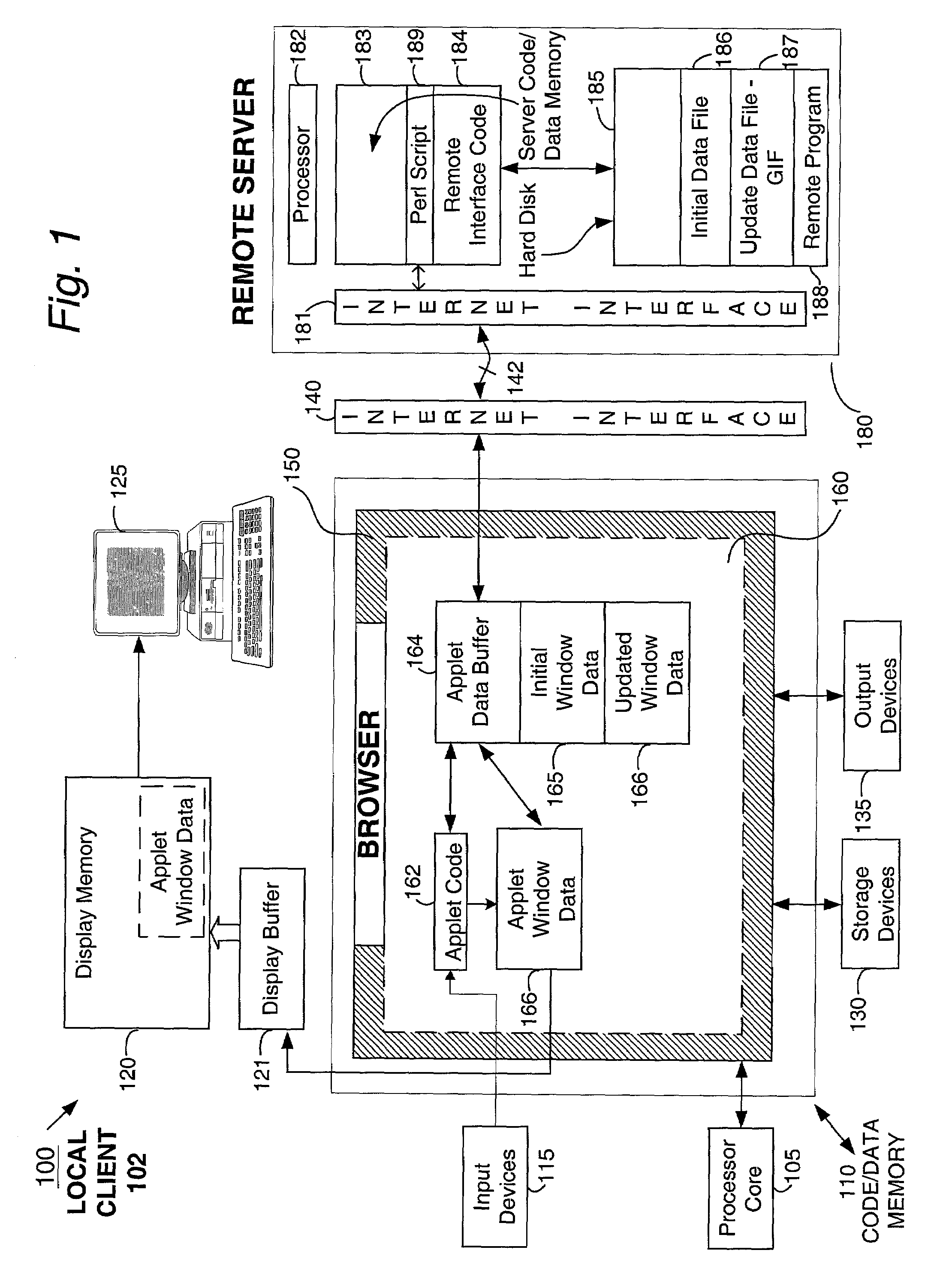System and method for annotating and capturing chart data
a chart data and system technology, applied in the field of system and method for annotating and capturing chart data, can solve the problems of increase the possibility of security/privacy breaches at the user's local computing system, and no practical method for a user to monitor
- Summary
- Abstract
- Description
- Claims
- Application Information
AI Technical Summary
Benefits of technology
Problems solved by technology
Method used
Image
Examples
Embodiment Construction
[0059]A preferred embodiment of a system 100 constructed in accordance with the present disclosure is shown in block diagram form in FIG. 1. A local client computing system 102 includes a number of components found in any typical contemporary computing system, including a processor 105 operable with a system code / data memory 110 (normally a DRAM), one or more input devices 115 (usually a keyboard, mouse, joystick or the like), a display memory 120 and associated buffer 121) (typically a supplemental fast VRAM or DRAM separate from system memory 110), a display 125 (preferably a CRT monitor, LCD panel etc.), one or more storage devices 130 (ordinarily a hard disk drive or other magnetic / optical based devices), an output device 135 (usually a printer) and an I / O interface 140 (preferably a high speed modem and associated drivers) for establishing an electronic connection 142 to the internet, an intranet, or other computer network. All of the aforementioned components are conventional,...
PUM
 Login to View More
Login to View More Abstract
Description
Claims
Application Information
 Login to View More
Login to View More - R&D
- Intellectual Property
- Life Sciences
- Materials
- Tech Scout
- Unparalleled Data Quality
- Higher Quality Content
- 60% Fewer Hallucinations
Browse by: Latest US Patents, China's latest patents, Technical Efficacy Thesaurus, Application Domain, Technology Topic, Popular Technical Reports.
© 2025 PatSnap. All rights reserved.Legal|Privacy policy|Modern Slavery Act Transparency Statement|Sitemap|About US| Contact US: help@patsnap.com



